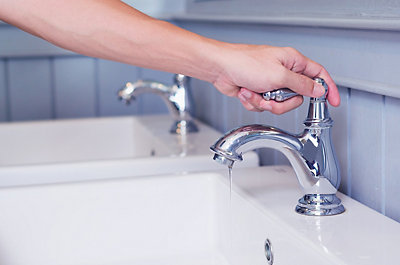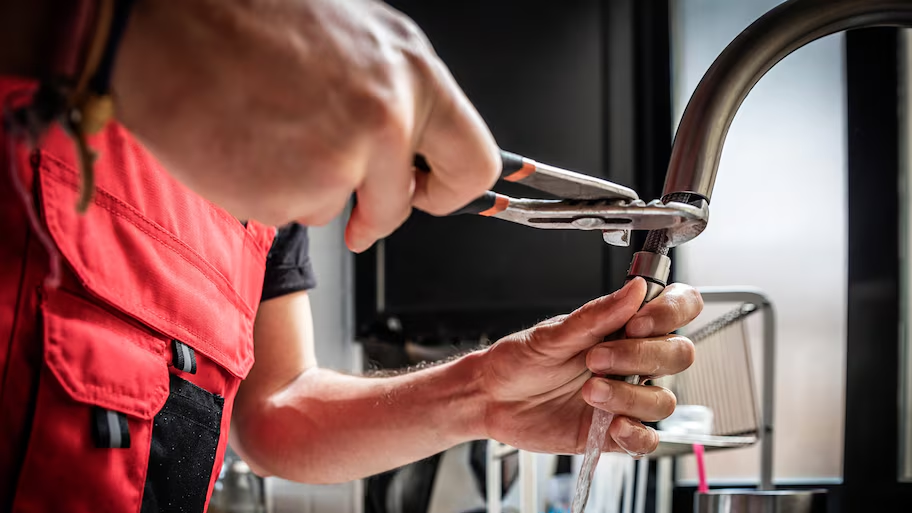Understanding the Importance of Repairing a Malfunctioning Faucet
Understanding the Importance of Repairing a Malfunctioning Faucet
Blog Article
Presented here down the page you'll find more decent insight about How to Fix a Dripping or Leaky Faucet .

Dripping faucets might seem like a small aggravation, but their effect exceeds simply the aggravation of the noise. From wasting water to incurring unneeded financial prices and health risks, neglecting a dripping tap can result in various effects. In this post, we'll explore why it's essential to address this common family problem quickly and successfully.
Wastefulness of Water
Ecological Impact
Trickling taps add substantially to water waste. According to the Epa (EPA), a solitary faucet leaking at one drip per secondly can waste greater than 3,000 gallons of water annually. This not only strains water resources however additionally influences communities and wild animals based on them.
Financial Expenses
Boosted Water Expenses
Past the environmental influence, dripping faucets can pump up water expenses considerably. The accumulated waste over time converts into higher utility expenses, which can have been prevented with prompt repair services.
Possible Residential Property Damage
In addition, prolonged leaking can cause damage to fixtures and surface areas bordering the tap. Water build-up can cause discoloration, corrosion, and even structural issues if left ignored, leading to extra fixing prices.
Health and wellness Worries
Mold And Mildew and Mildew Growth
The constant presence of wetness from a leaking tap develops a perfect atmosphere for mold and mildew and mildew growth. These fungis not only jeopardize interior air high quality yet likewise pose wellness risks, especially for people with respiratory conditions or allergic reactions.
Waterborne Illness
Stationary water in leaking faucets can come to be a breeding ground for microorganisms and other microorganisms, increasing the threat of waterborne conditions. Impurities such as Legionella germs grow in stagnant water, potentially causing severe illnesses when consumed or inhaled.
Do it yourself vs. Expert Fixing
Pros and Cons of Do It Yourself Repair
While some might try to fix a trickling faucet themselves, DIY repair work include their very own set of challenges. Without correct understanding and tools, DIY efforts can aggravate the issue or result in insufficient repair services, prolonging the issue.
Advantages of Employing an Expert Plumber
Hiring a specialist plumber ensures that the underlying cause of the leaking faucet is dealt with efficiently. Plumbings have the competence and tools to diagnose and repair tap problems efficiently, conserving time and reducing the danger of more damage.
Step-by-Step Overview to Repairing a Dripping Faucet
Tools Required
Before attempting to repair a dripping tap, collect the necessary tools, consisting of a flexible wrench, screwdrivers, substitute components (such as washers or cartridges), and plumber's tape.
Usual Tap Issues and Their Solutions
Determine the type of tap and the specific problem triggering the drip. Common troubles include damaged washing machines, corroded valve seats, or malfunctioning O-rings. Describe producer guidelines or online tutorials for step-by-step guidance on repairs.
Safety nets
Regular Maintenance Tips
To prevent leaking taps, carry out regular upkeep such as cleaning aerators, evaluating for leakages, and changing worn-out parts promptly. In addition, think about mounting water-saving gadgets or updating to much more effective fixtures.
Importance of Prompt Services
Resolving dripping taps as quickly as they're observed stops additional water wastage and prospective damage, ultimately saving both water and cash in the future.
Influence On Residential Property Worth
Perception of Well-Maintained Building
Keeping a residential or commercial property in good condition, including resolving upkeep problems like leaking taps, enhances its perceived worth and desirability amongst prospective buyers or lessees.
Impact on Resale Worth
Features with properly maintained plumbing fixtures, consisting of taps, command higher resale worths in the property market. Attending to leaking taps can contribute to a favorable impression during residential or commercial property inspections and settlements.
Ecological Duty
Private Contribution to Preservation
Taking responsibility for dealing with dripping taps lines up with more comprehensive efforts towards water conservation and ecological sustainability. Every person's activities collectively make a substantial effect on maintaining precious resources.
Sustainable Living Practices
By prioritizing timely repair work and adopting water-saving behaviors, people add to sustainable living practices that profit both present and future generations.
Final thought
Dealing with a dripping tap surpasses plain comfort; it's a necessary action towards conserving water, minimizing economic expenses, and guarding wellness and residential or commercial property. Whether with DIY repair work or expert support, taking action to fix trickling faucets is a tiny yet impactful method to promote accountable stewardship of resources and contribute to a much healthier, extra sustainable future.
How to Fix a Leaky Faucet: Step-by-Step Repair Guide
A leaky faucet may seem like a simple annoyance, but if it's not fixed promptly, that leak could cost hundreds to potentially thousands. From water damage to mold, mildew, and high water bills, even a tiny leak can be catastrophic if left unattended. Damage like this can even affect the overall value of your home, so it's important to take the right approach for leaky faucet repair. You may need the help of a plumber in some cases, but we've got a few tips you can try on how to fix a leaky faucet before calling the pros.
Four Faucet Types
When you're learning how to fix a leaky faucet, the first step is knowing what kind of faucet you're working with! There are four common types.
Cartridge Faucets
Cartridge faucets come in one- or two-handled varieties. In one-handled cartridge faucets, hot and cold water combines in a single cartridge. In the two-handled versions, hot and cold water are controlled separately and mixed in the faucet.
Ball Faucets
Ball faucets have a single lever you push up and down to adjust the pressure and rotate to change the temperature. A slotted metal ball controls the amount of water allowed into the spout.
Compression Washer Faucets
They're the oldest type of faucet, but they're still used in many homes — especially older ones. Compression faucets have two separate handles that, when turned, raise or lower the washer that seals a water valve. This valve stops water from flowing through the faucet when it is turned off.
Disc Faucets
Disc faucets rarely need to be repaired due to their maintenance-free design. The water flow is controlled by two discs — the upper one raises and lowers against a fixed lower disc, creating a watertight seal. If your disc faucet starts leaking, you may need to replace the seals or clean residue buildup from the inlets.
Fixing a Leaky Faucet
Step 1: Turn Off the Water
Whether you're learning how to fix a leaky bathtub faucet or how to fix a leaky kitchen faucet, always turn off the water supply to your working area when you're fixing a leak. The last thing you want is a flood added to your list of things to fix.
Look for the shutoff valves below your sink or around the tub and turn them clockwise to stop the water flow. If your faucet doesn't have shutoff valves, you may need to turn off the water for the whole house. Check to make sure it's off by turning the faucet on. If nothing comes out, you're ready to start the repair.
Step 2: Take Apart the Faucet
How you disassemble your faucet depends on the type of fixture you have. You can use a flathead screwdriver to remove the caps on top of the handle or handles for cartridge and compression faucets. Inside, you should see handle screws. Unscrew these with a screwdriver to remove the handle.
Disc- and ball-style faucets will typically have an inlet screw near the handle, and removing that will reveal the interior of the faucet.
Detach the Valve Stem
For cartridge- and compression-style faucets, you'll see the inner valve stem or cartridge once you remove the faucet handles. If you have a compression faucet, unscrew the brass valve stem. If you have a cartridge faucet, pull out the cartridge. If your cartridge has been in place for a while, it may require some tools or extra force to remove it due to mineral deposits.
Examine and Replace Parts
Once you've removed the parts, check them out to confirm what needs to be replaced. You may see corroded rubber washers, O-rings, stems, or cartridges. On a ball-style faucet, check the seats and springs for damage.
If you need to repair a leaky disc faucet, check the inlet and seals on the lower disc.
Once you determine what parts must be replaced, visit your local hardware store. Bring the damaged parts with you to ensure you can purchase the correct components to replace them.
Clean Valves and Faucet Cavity
If you've removed a stem or cartridge, you may notice mineral buildup in the faucet's threads. Use white vinegar to clean the valve seat by soaking it for a few minutes, then scrub it away with a soft toothbrush and rinse with warm water. You can also clean the interior of the faucet in the same way.
Reassemble the Faucet
Once your faucet is cleaned and the required parts have been replaced, it's time to reassemble it. Put the pieces back together and slowly turn the water supply back on. Doing this slowly is crucial because too much initial water pressure can damage the new hardware you've just installed.
https://homewarranty.firstam.com/blog/how-to-fix-leaky-faucet

I found that blog entry on Should I Repair or Replace a Leaky Faucet? while surfing the internet. For those who enjoyed our blog posting please remember to pass it around. I praise you for your time. Revisit us soon.
Report this page